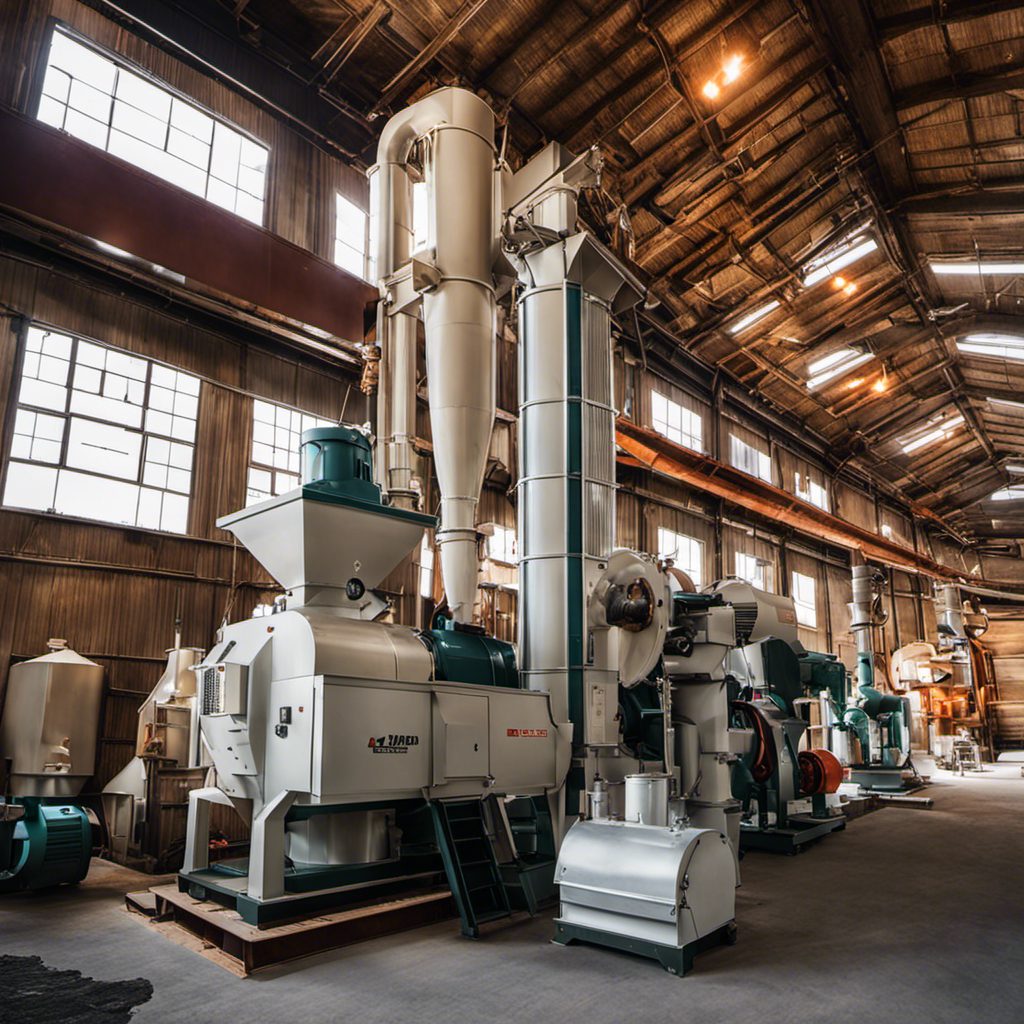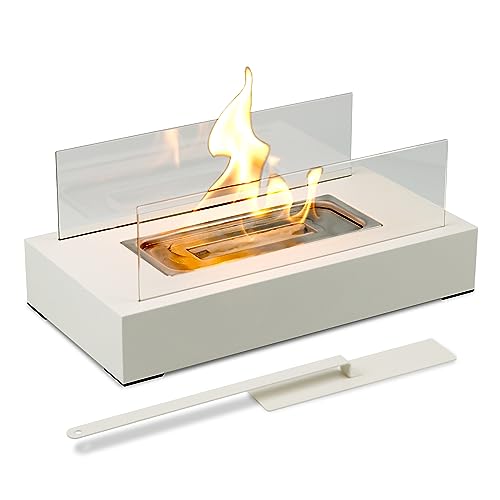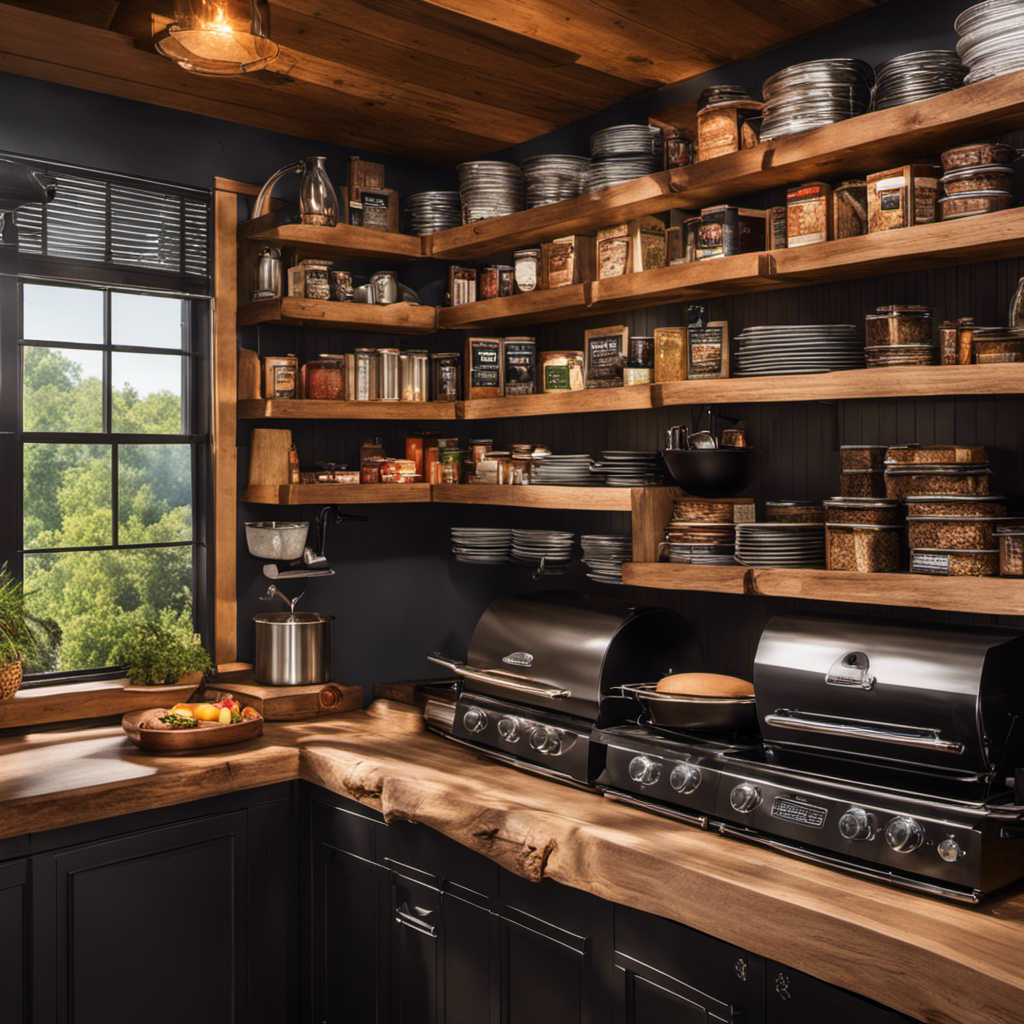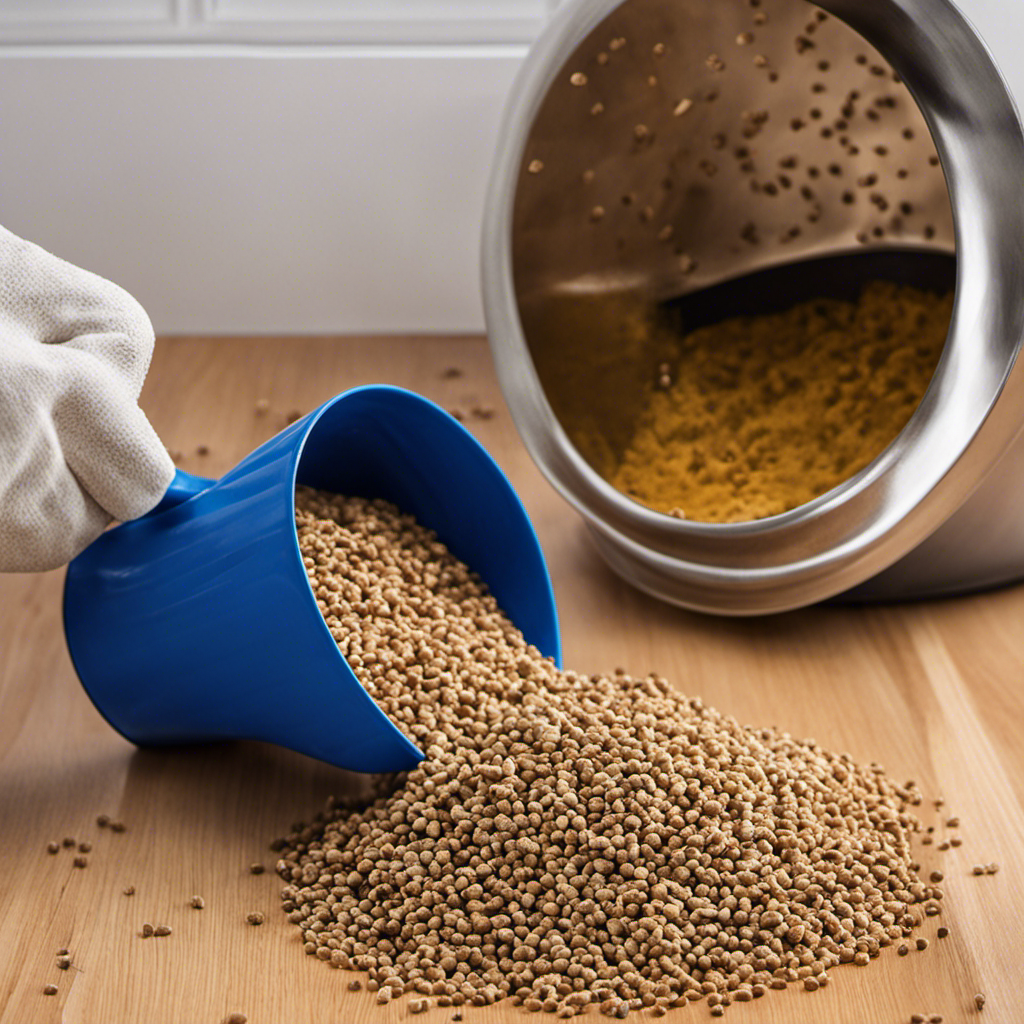Curious about how a wood pellet mill works? Let me break it down for you thoroughly.
A wood pellet mill is a fascinating machine that takes raw materials like wood chips and transforms them into compact, energy-dense pellets.
With the help of a hammer mill, the wood chips are pulverized and then pelletized through a meticulous process.
The finished pellets are then cooled, dried, sieved, and packaged to ensure top-notch quality.
But that’s not all, there are also important environmental considerations to keep in mind.
Intrigued? Let’s delve deeper into the inner workings of a wood pellet mill.
Key Takeaways
- Wood pellet mills compress wood fibers into compact pellets using heat and pressure.
- The pellets can be used as a renewable source of heat or fuel.
- Maintenance tasks like inspecting, cleaning, and lubricating the equipment are crucial for optimal performance.
- Proper sizing and processing of wood chips, as well as maximizing efficiency and output, are important in the pelletization process.
The Basics of Wood Pellet Mills
Wood pellet mills use a combination of heat and pressure to compress wood fibers into compact pellets. These mills offer numerous benefits, including increased energy efficiency and reduced greenhouse gas emissions compared to traditional fossil fuels.
A production cost analysis of wood pellet mills reveals that they are cost-effective, with lower operating expenses and stable pricing of raw materials. The process begins by feeding the wood fibers into the mill, where they are heated and compressed. The heat softens the lignin in the wood, allowing the fibers to bind together. The pressure further compresses the fibers, forming dense pellets. These pellets can then be used as a renewable source of heat or fuel.
Moving on to the subsequent section about raw materials for wood pellet production…
Raw Materials for Wood Pellet Production
When it comes to producing wood pellets, the choice of raw materials is crucial. Different types of raw materials, such as sawdust, wood chips, and agricultural residues, can be used to make pellets.
The processing of these materials involves grinding, drying, and compressing them into the desired shape and size. The quality of the pellets depends on various factors, including the moisture content, density, and durability of the raw materials used.
Types of Raw Materials
There are various types of raw materials that can be used in a wood pellet mill. These materials play a crucial role in the pellet manufacturing process and biomass pellet production. Here is a table showcasing the different types of raw materials commonly used:
| Raw Material | Description | Advantages |
|---|---|---|
| Sawdust | Fine wood particles produced from sawmills | Abundant supply, high calorific value, easy to process |
| Wood Chips | Small pieces of wood obtained from logging | Cost-effective, widely available, suitable for large mills |
| Agricultural Residues | Biomass waste from crops or farming activities | Renewable, reduces waste disposal, potential income source |
| Forest Residues | Debris from logging or forest management | Utilizes waste material, reduces environmental impact |
These raw materials undergo further processing to become high-quality wood pellets. Now, let’s delve into the next section and explore how these materials are processed without delay.
Processing the Materials
The different types of raw materials used in a wood pellet mill are processed to create high-quality wood pellets. To ensure smooth operation and optimal performance of the mill, regular maintenance is crucial.
This includes inspecting and cleaning the equipment, lubricating moving parts, and checking for any wear or damage. Troubleshooting wood pellet mill issues is also an essential part of maintenance. Common problems can include blockages, uneven pellet size, or low pellet production.
These issues can be resolved by adjusting the feed rate, checking the moisture content of the raw materials, or replacing worn-out parts. By addressing maintenance and troubleshooting tasks promptly, the wood pellet mill can consistently produce high-quality pellets.
This ensures the subsequent sections about the quality of pellets will focus on the desired characteristics and not on potential issues.
Quality of Pellets
To ensure optimal performance, it’s crucial to regularly inspect and clean the equipment in order to maintain the high quality of the wood pellets produced. Pellet durability is a key factor in the quality of the final product. The wood pellets need to withstand transportation and storage conditions without breaking apart or turning into dust.
It’s important to check the machinery for any signs of wear or damage that could affect the pellet formation process. Additionally, keeping the storage conditions stable is essential in preserving the quality of the pellets. Moisture and temperature fluctuations can lead to degradation and reduce the durability of the pellets.
By maintaining clean equipment and ensuring proper storage conditions, we can guarantee the production of high-quality wood pellets.
Now, let’s move on to preparing the wood chips for pelletization.
Preparing the Wood Chips for Pelletization
When it comes to preparing wood chips for pelletization, there are several key points to consider.
First, wood chip processing plays a crucial role in the overall quality and efficiency of the pelletization process.
Second, choosing the right pelletization techniques can greatly impact the output and final product.
Lastly, it is important to optimize efficiency in order to maximize output and ensure a cost-effective production process.
Wood Chip Processing
First, you’ll need to properly size and process the wood chips before feeding them into the wood pellet mill.
To begin, the wood chips should be stored in a dry and secure area, such as a wood chip storage bin. This ensures that the wood chips remain free from moisture and contaminants.
When it comes to processing the wood chips, they should be chipped into small, uniform pieces using a wood chipper. This step is crucial as it ensures that the wood chips are of the right size for pelletization.
Additionally, regular pellet mill maintenance is essential to keep the machine in optimal condition. This includes cleaning the die and rollers, lubricating the moving parts, and inspecting for any wear or damage.
Pelletization Techniques
After the wood chips have been processed, the next step is pelletization. This process involves transforming the wood chips into compressed pellets. Pelletization is crucial as it increases the pellet density and pellet durability, making them more efficient and easier to handle.
Here are five important factors to consider during the pelletization process:
-
Raw Material Preparation: The wood chips need to be properly sized and dried to ensure a consistent pellet quality.
-
Grinding and Conditioning: The wood chips are ground into a finer particle size and mixed with steam or water to soften the lignin, which acts as a natural binder.
-
Compression: The conditioned wood particles are then fed into the pellet mill, where they are compressed under high pressure into cylindrical pellets.
-
Cooling and Screening: The hot pellets are cooled and screened to remove any fines or oversized pellets, ensuring a uniform pellet size.
-
Packaging: The final step involves packaging the pellets into bags or bulk containers for transportation and storage.
Now that the pellets are ready, let’s move on to discuss the efficiency and output of a wood pellet mill.
Efficiency and Output
The efficiency and output of a wood pellet mill depend on several factors, such as the size and moisture content of the raw material and the quality of the pellet die. To improve energy usage and reduce waste in the pellet production process, it is crucial to optimize these factors. The table below summarizes the key considerations for maximizing efficiency and output:
| Factors | Impact on Efficiency and Output |
|---|---|
| Raw material size | Smaller particles result in faster and more uniform pelletization. |
| Moisture content | Optimal moisture levels ensure proper binding and densification of pellets. |
| Pellet die quality | High-quality dies produce pellets with consistent shape and density. |
The Role of the Hammer Mill in Pellet Production
If you want to understand the role of the hammer mill in pellet production, let me explain it to you.
The hammer mill plays a crucial role in the size reduction process of wood chips. Its main function is to grind the chips into smaller particles, allowing for easier pelletization.
Size reduction is of utmost importance in pellet production because it increases the surface area of the material, making it more accessible to the binding agents and heat during the pelletizing process.
By reducing the size of the wood chips, the hammer mill ensures a more uniform and consistent feedstock for the pellet mill. This efficient size reduction ultimately leads to better quality pellets.
Now let’s move on to the pelletizing process: from chips to pellets, where the magic of transformation happens.
The Pelletizing Process: From Chips to Pellets
Now let me show you how the pelletizing process transforms wood chips into pellets.
The first step in this process is to ensure that the wood chips are properly dried. This is crucial because any moisture present in the chips can affect the quality of the final product.
Once the chips are dried, they are then fed into the pelletizing equipment. The equipment consists of a pelletizing chamber and a die. The wood chips are compressed and forced through the die, which shapes them into pellets.
The pelletizing temperature is carefully controlled to ensure that the pellets are formed correctly. This temperature is typically between 160 to 200 degrees Celsius.
Understanding the role of the pellet mill is essential in producing high-quality wood pellets.
Understanding the Role of the Pellet Mill
When it comes to pellet production, understanding the pellet production process and the importance of raw materials is crucial.
The pellet production process involves transforming raw materials, such as wood chips, into high-quality pellets through a series of steps, including grinding, drying, and pelletizing.
The choice of raw materials, such as the type of wood and its moisture content, greatly impacts the quality and efficiency of the pellet production process.
Pellet Production Process
To understand how a wood pellet mill works, you need to know that the pellet production process involves several steps.
First, the raw materials, such as sawdust or wood chips, are fed into the pellet mill’s hopper. Then, they are transported to the compression chamber, where the rotating die and rollers compress the materials into small, cylindrical pellets.
The pressure and heat generated during this process cause the lignin in the raw materials to melt and act as a natural binder, holding the pellets together. However, pellet mill maintenance is crucial to ensure smooth operation and avoid issues such as uneven pellet size or blockages.
Regular cleaning, lubrication, and inspection of the die and rollers are essential. Additionally, troubleshooting skills are necessary to identify and fix any problems that may arise during production. These maintenance and troubleshooting practices are vital for optimal pellet production and efficiency.
Now, let’s move on to the importance of raw materials in the pellet production process.
Importance of Raw Materials
If you want to ensure optimal pellet production and efficiency, it’s important to understand the significance of choosing the right raw materials. The success of a pellet mill operation heavily relies on the quality and characteristics of the wood used for pellet production.
Before starting the process, a wood pellet market analysis should be conducted to determine the demand and preferences of the market. This analysis helps in selecting the appropriate raw materials that meet the market requirements.
Factors such as moisture content, size, and density of the wood play a crucial role in the pelletization process. By carefully selecting the raw materials, the pellet mill can achieve higher production rates and produce pellets of superior quality.
Now, let’s move on to the next section about cooling and drying the wood pellets.
Cooling and Drying the Wood Pellets
The wood pellets undergo a cooling and drying process after compression. This is necessary to achieve the desired moisture content for storage and use. Various cooling techniques are employed in the wood pellet industry.
-
Air cooling: The pellets are spread out on a conveyor belt and exposed to cool air, which eliminates excess heat and moisture.
-
Water cooling: Water is sprayed onto the pellets to reduce their temperature and moisture levels.
-
Counterflow cooling: The pellets are passed through a cooling chamber where cool air is blown in the opposite direction of their movement, effectively cooling them down.
-
Fluid bed cooling: The pellets are suspended in a stream of air or gas, allowing for efficient removal of heat and moisture.
Once the pellets have been cooled and dried, they can proceed to the next stage of the process. This stage involves sieving and packaging the finished pellets to ensure uniform size and prepare them for distribution.
Sieving and Packaging the Finished Pellets
Once the pellets have been cooled and dried, they’re ready to be sieved and packaged for distribution. The sizing process ensures that the pellets are of consistent size, which is important for efficient burning. This is done by passing the pellets through a series of screens with different mesh sizes. The smaller particles that pass through the screens are returned to the mill for further processing.
The remaining pellets are then bagged using automated bagging machines. The bagging process is highly efficient and ensures that the pellets are securely sealed to maintain their quality during transportation. A typical bag size is 40 pounds, but other sizes can also be used based on customer requirements. The bags are then labeled and stacked on pallets for easy handling and shipment.
This careful sieving and packaging process ensures that the finished wood pellets are ready for sale and use.
Moving on to quality control measures for wood pellet production, we take several steps to ensure the highest quality standards are met.
Quality Control Measures for Wood Pellet Production
Moving on, we ensure the highest quality standards are met by implementing various quality control measures in the production of wood pellets. These measures are crucial for pellet quality assurance and customer satisfaction. Here are three key steps we take to maintain the highest quality standards:
-
Raw Material Inspection: We carefully inspect the quality of the raw materials used in pellet production. This includes analyzing the moisture content, size consistency, and impurity levels to ensure only the best materials are used.
-
Production Monitoring: Our production process is closely monitored to ensure consistent pellet quality. We regularly test the density, durability, and moisture content of the pellets throughout the manufacturing process to detect any deviations from the desired specifications.
-
Final Product Testing: Before the pellets are packaged and shipped, we conduct comprehensive quality tests. These tests include measuring the ash content, calorific value, and pellet dimensions to guarantee that the final product meets the highest quality standards.
By implementing these quality control measures, we can provide our customers with wood pellets that are of exceptional quality.
Now, let’s explore the environmental considerations in wood pellet mill operations.
Environmental Considerations in Wood Pellet Mill Operations
During my time working in the wood pellet mill industry, I have come to appreciate the importance of considering the environmental impact of our operations.
One key aspect is energy consumption. Wood pellet mills require significant amounts of energy to power the machinery involved in the production process. To minimize our carbon footprint, we have implemented energy-efficient measures such as using high-efficiency motors and optimizing the use of heat energy.
Another critical consideration is emissions reduction. As with any industrial process, wood pellet production generates emissions that can contribute to air pollution and climate change. To address this, we have implemented advanced emission control technologies, such as installing electrostatic precipitators and bag filters, to capture and remove particulate matter and harmful gases from the pellet production process. Additionally, we continuously monitor and analyze our emissions to ensure compliance with environmental regulations.
What is the Difference Between a Wood Pellet Mill and a Wood Pellet?
A wood pellet mill is a machine that processes raw materials into small, compacted pellets for heating or cooking. On the other hand, a wood pellet is the end result of this process – a small, dense fuel source made from compressed wood fibers. Wood pellet function explained in simple terms.
Are Wood Pellets from a Wood Pellet Mill the Same as Regular Wood Pellets?
Wood pellet function principles are the same for pellets produced from a wood pellet mill and regular wood pellets. Both are made from compressed wood fibers and can be used interchangeably. The only difference may be in the specific composition of the wood used, but the function principles remain consistent.
Frequently Asked Questions
How Much Does a Wood Pellet Mill Cost?
A wood pellet mill’s cost can vary depending on the size and capacity, ranging from a few thousand dollars to tens of thousands. However, the return on investment can be significant in the long run.
What Is the Typical Production Capacity of a Wood Pellet Mill?
What’s the production capacity of a wood pellet mill? It depends on the efficiency of the mill. Higher efficiency means more pellets produced per hour. The capacity can range from a few hundred pounds to several tons.
Are There Any Specific Safety Precautions That Need to Be Taken When Operating a Wood Pellet Mill?
When operating a wood pellet mill, it is crucial to follow specific safety precautions and operating procedures. These include wearing protective gear, regularly inspecting equipment, and implementing proper maintenance and cleaning protocols.
Can Wood Pellet Mills Be Used to Produce Pellets From Other Materials Besides Wood?
Wood pellet mills can be used to produce pellets from a variety of alternative materials besides wood. However, it is important to note that wood pellets have distinct advantages over other materials in terms of efficiency and environmental impact.
What Are the Main Factors That Affect the Quality of Wood Pellets Produced by a Pellet Mill?
The quality of wood pellets produced by a pellet mill is influenced by factors such as moisture content and raw material quality. These variables impact the density, durability, and combustion efficiency of the pellets.
Conclusion
In conclusion, operating a wood pellet mill is like orchestrating a symphony of efficiency and precision. From the moment the raw wood chips enter the mill, they are transformed into perfect pellets through a meticulously controlled process.
The hammer mill tirelessly grinds and pulverizes, while the pelletizing machines shape and compress with expert precision. The finished pellets, cooled and dried to perfection, are then packaged, ready to fuel the world.
This intricate dance of machinery ensures quality and sustainability, making wood pellet mill operations a vital contributor to a greener future.
Logan’s affair with adventure began in childhood. He hailed from a small town where vast forests bordered one side and endless shores stretched on the other. His days were spent exploring uncharted woods, climbing tall trees, or listening to the tales of old sailors. This early immersion in a world brimming with stories and mysteries became the foundation of his passion for writing.











